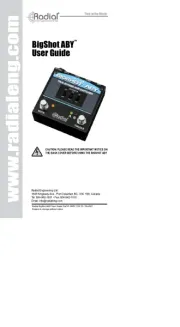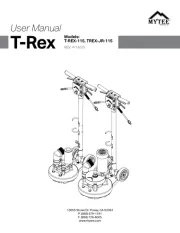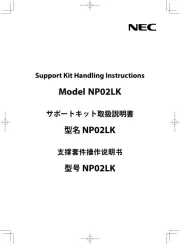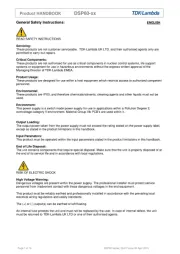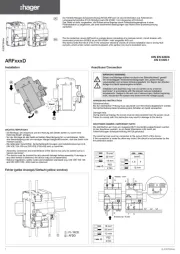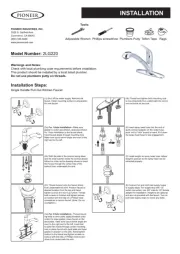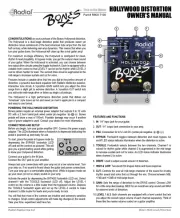LATCH mode also allows you to layer your notes or sounds. Each time you press
down on the footswitch to sustain a new note, the Superego will layer it on top of the
notes that were previously sustained. The SPEED/LAYER knob sets the amount of
attenuation for the old layers. If you turn this knob down to the CCW position, no
layering will occur. As you turn the SPEED/LAYER knob up, less attenuation and more
layering will occur. If you turn the knob up all the way to the maximum CW position,
each layer will remain at full volume.
AUTO Mode: Set the toggle switch to its right most position to select AUTO mode.
In the other two modes: MOMENTARY and LATCH, the Superego requires you to
press the footswitch each time you want to sustain a new note, chord or sound. In
AUTO mode the Superego detects each new note or chord that you play and sustains
it automatically. If a note not loud enough, will not trigger a new sustain is it .
When in AUTO mode, press the footswitch once to put the Superego into effect
mode, the LED will light to indicate the Superego is activated. To switch back to
bypass while in AUTO mode, you must double-tap the footswitch, after doing
so the LED shuts off. If you press and hold the footswitch while the effect is activated
and in AUTO mode, the Superego stops accepting new notes and sustains the frozen
sound indefinitely. This allows the musician to play over frozen sounds while in AUTO
mode.
As long you are not holding down the footswitch, the sustained notes automatically
fade out at a speed determined by the SPEED/LAYER knob. As you turn the knob
clockwise the fade out time increases. When the knob is set to its maximum CW
position, the sustained notes do not fade out.
-CONTROLS-
SPEED/LAYER Knob MOMENTARY: In mode, this control adjusts the speed of the
attack and decay of the frozen sound. Fully CCW produces the quickest attack and
decay, having a nearly instantaneous fade in and fade out. Fully CW yields the
longest attack and decay time for a more gradual fade in and fade out. For any given
knob setting the decay time is always longer than the attack time.
In mode, this knob is a layer control. The layer control adjusts the volume of LATCH
the previously latch-sampled sound. Turn this knob fully CCW and only the newly
latched samples will be heard. Set to fully CW, previously latched samples will not
decrease in volume and newly latched samples will be added to the existing sound.
In mode, this knob will adjust the decay of the auto triggered samples. Fully AUTO
CCW yields a very short decay time and will result in an effect that is staccato and
reverberant in nature. As you turn this knob clockwise, the decay time increases. At
fully CW, the sampled sound plays until a new sample is triggered or until the effect
is disengaged.
GLISS Knob: This control adjusts the speed of the gliss effect. Gliss morphs one
frozen note or chord into the next; it is similar to the portamento function found on
many synthesizers. As you turn the GLISS knob clockwise, the gliss effect slows
down. To turn gliss off completely, turn the GLISS knob down all the way to its full
CCW position. The easiest way to hear the GLISS effect is PERFORMANCE NOTE:
to put the Superego into AUTO mode, completely turn down the DRY knob and set
the GLI SS and SPEED knobs at 12 o’clock or higher.
D KnobRY : This knob adjusts the volume of the unaltered dry instrument signal.
Set DRY to fully CCW and no dry signal will be heard. As you turn DRY clockwise, the
volume of the dry signal will increase. Unity gain is at approximately the “2 o’clock”
setting.
EFFECT Knob: This control adjusts the volume of the wet effect signal. Fully CCW
yields no wet effect signal. As you turn the EFFECT knob clockwise the effect’s
volume increases.
Footswitch: MOMENTARYIn mode, the footswitch triggers the Superego to freeze
a new note, chord or sound when the footswitch is pressed down. The sound will be
sustained as long as the footswitch is held down. Once the footswitch is released, the
Superego goes into bypass.
In mode, the footswitch triggers the Superego to freeze a new note, chord or LATCH
sound each time it is pressed. When you release the footswitch, the Superego
continues to sustain the sound. A double-tap is required to disengage the effect.
In mode, pressing the footswitch once will engage the effect to sample new AUTO
notes, chords and sounds automatically. If the footswitch is held down while the
effect is ON, the Superego stops accepting new notes while sustaining the last sound
that was sampled, enabling the musician to play over the frozen sound. A double-tap
of the footswitch is required to disengage the effect.
TOGGLE Switch: The toggle switch selects the mode of operation for the Superego.
Point the switch to the left and Superego is in mode Set the toggle to the LATCH .
center position for mode, MOMENTARY . Set the switch to the right for mode. AUTO
INPUT Jack: Connect the output of your guitar into the INPUT jack of the Superego.
The input impedance presented at the INPUT jack is 2.2Mohms.
OUTPUT Jack: Connect the OUTPUT jack of the Superego into the input of your
amplifier, or another effects pedal. The output impedance is approximately 200
ohms.
SEND Jack and RETURN Jack: The SEND and RETURN jacks help to form an
effects loop for patching additional effects that will process the wet signal only. in
SEND is an output with impedance < 5k ohms. RETURN is an put with impedance = in
2.2M. To properly connect an external effects loop, connect the SEND jack to the
input of the first effect in the effects loop. Connect the output of the last effect in the
loop to the RETURN jack. While in Bypass, the SEND jack is muted.
The jSEND ack can also be used independently as a “wet out”. To use the SEND
jack as a “wet out”, connect the send jack to another amplifier, or effects chain, and
leave the RETURN jack disconnected .
9V PWR Jack: Connect the output plug of the supplied AC Adaptor into the 9V
power jack at the top of Superego. The Superego 0mA at ’s current requirement is 14
9VDC. The polarity of the power jack is center negative. The maximum allowable
power supply voltage is 10.5 VDC.












